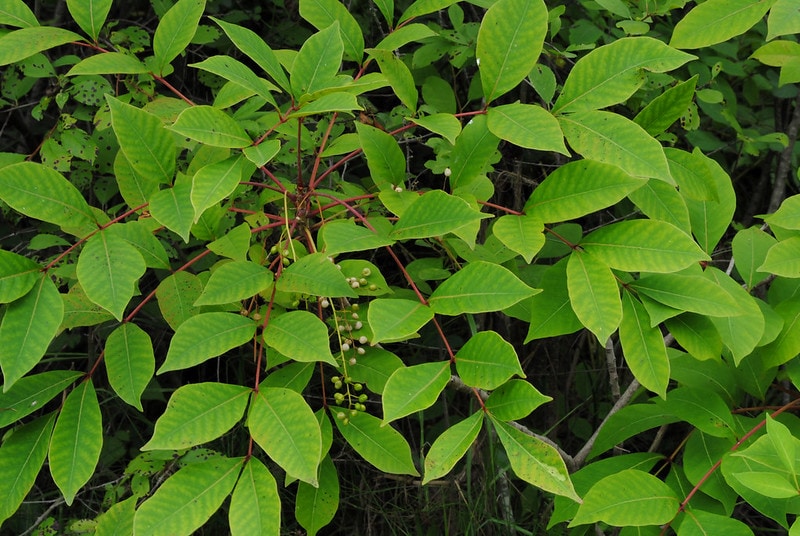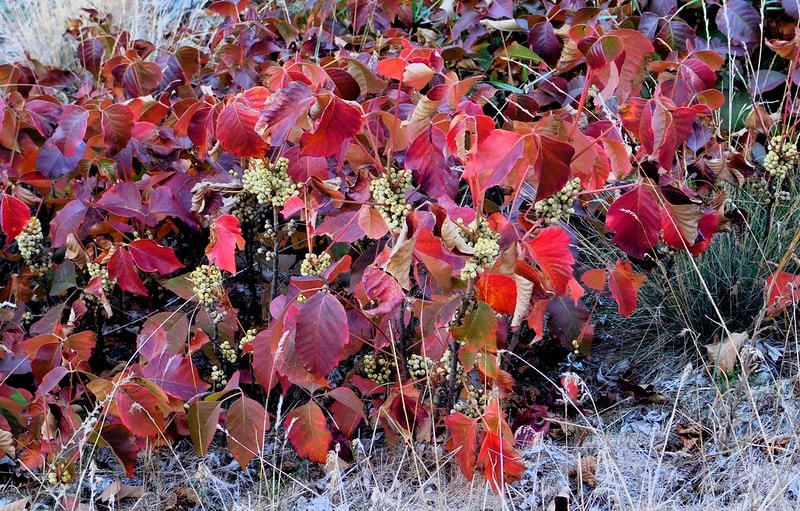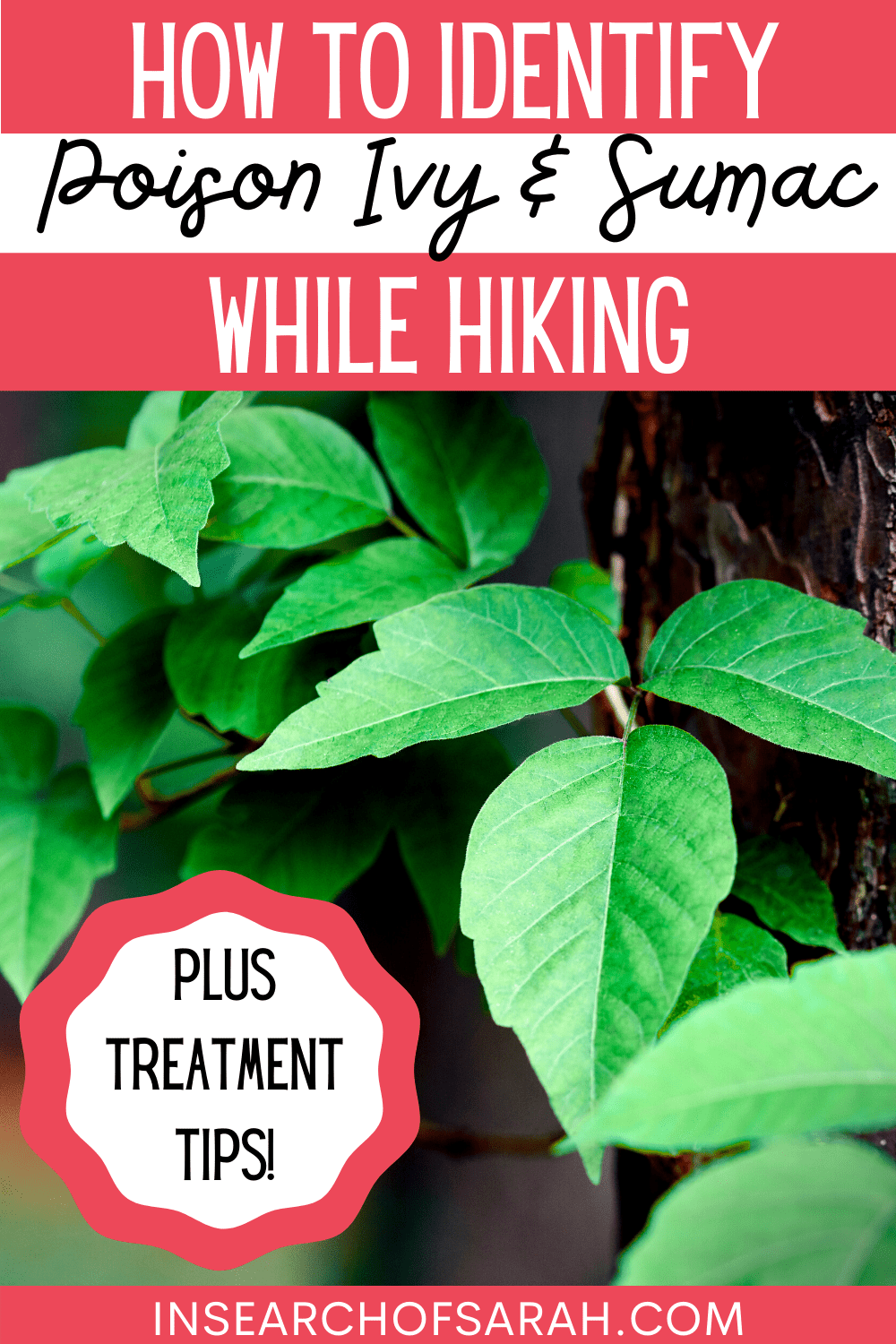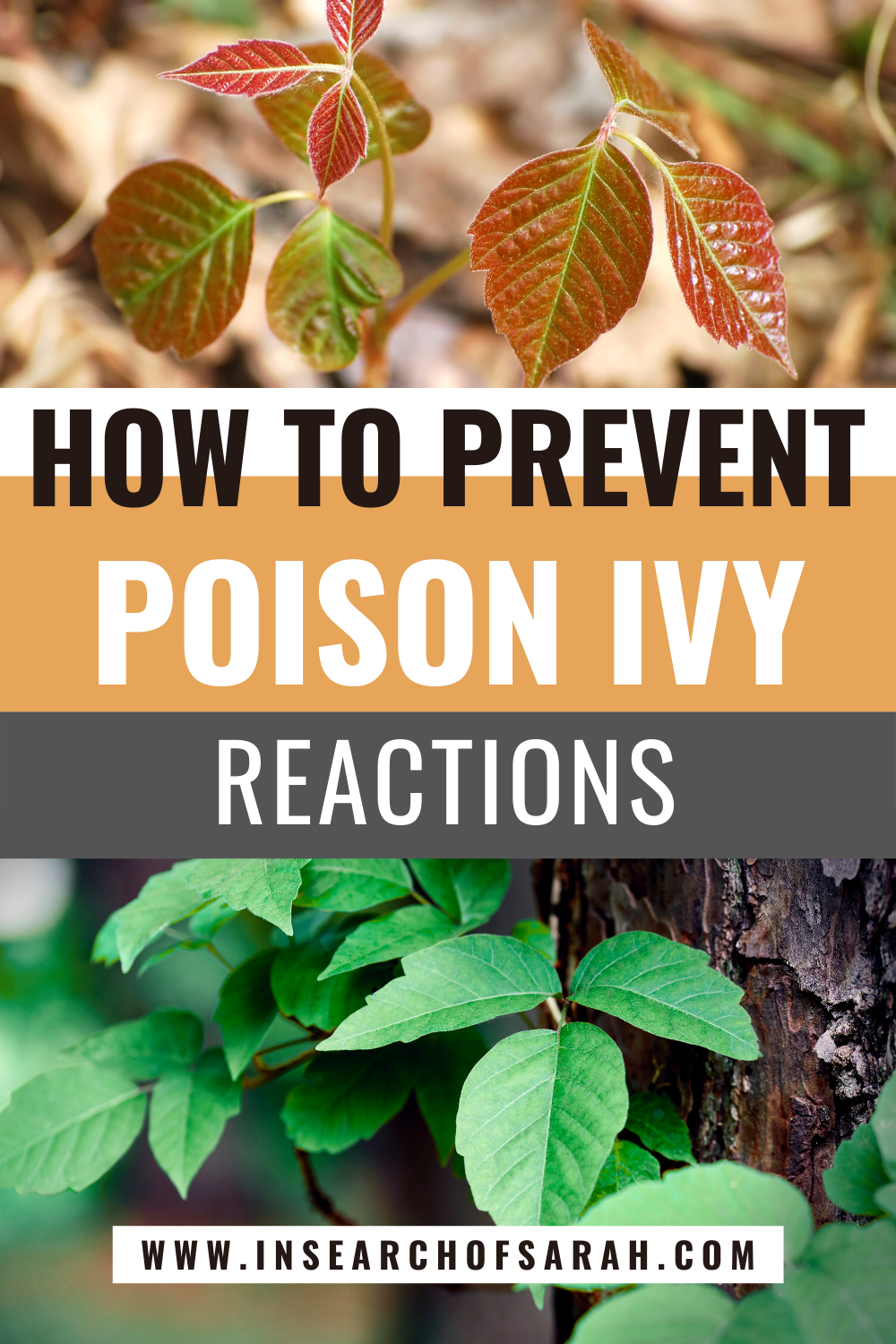Poison ivy: the plant we all feared as kids, and the plant a lot of us are still unfamiliar with.
With warm weather upon us in Ontario, many of us are turning the outdoors for fresh air and exercise.
We’re fortunate to have an abundance of hiking trails around us, but it’s very likely to encounter some plants that may be poisonous.
For that reason, it’s important to be able to recognize certain plants that can cause pain and irritation!
Poison ivy, along with poison sumac are wild plants found in the outdoors, and all of them share the same property that causes skin irritation: urushiol.

Urushiol is an oil that causes an allergic skin reaction when you come into contact with it. Urushiol causes an itchy, burning sensation. Not fun, especially when you’re out hiking far from home!
Poison ivy and poison sumac aren’t life-threatening, but it is incredibly uncomfortable. However, there are ways you can quickly alleviate these symptoms.
This post contains affiliate links which means I earn compensation when you click on the links at absolutely no extra cost to you! Feel free to read my disclosure policy. Thank you for supporting my blog!
How to identify poison ivy and poison sumac
One of the best ways to prevent reactions from these poisonous plants is to know exactly what you’re looking for. Many plants look similar, and sometimes it’s difficult to know what you’re looking at!
Hot tip: Download the free “Picture This” app. It allows you to take a photo of the plant you’re looking at and it will quickly scan the image and tell you what it is, as well as if it’s poisonous or not!
What does Poison Ivy look like?
Poison ivy can sometimes be difficult to identify because it looks like a lot of the other plants. It can appear as a shrub, vine, or covering the ground.
You’ve likely heard of the expression, “leaves of three, let them be” – and it’s for good reason: those plants are poisonous!
The leaves are almond-shaped in clusters of three. The leaves are bright green during the summertime and red during the fall. Poison ivy also has hairy vines. Berries are grayish-white.

Poison ivy sometimes mistakenly gets referred to as “poison oak” but there is no poison oak found in Ontario, or the rest of Canada, except for rare occurrences in southern British Columbia.
Where it’s found: Poison Ivy is widespread throughout Ontario and is as far north as Kenora and Cochrane. It’s very abundant south of the north shore of Lake Huron. Some high-traffic places, like Scenic Caves Nature Adventures in the Blue Mountains, has signs indicating where poison ivy is.
Related: How to Avoid Tick Bites While Hiking
What does Poison Sumac look like?
Poison sumac looks like a shrub or a small tree, sometimes reaching up to 20 feet! Poison sumac has more than three leaves, and can range between 5-13 leaves but there is always an odd number of leaves. It is characteristic of the leaves to grow upwards. It also has hard, white berries.

Leaves are green during the spring and summer and bright red during the autumn.
Other common names for Poison Sumac are Poison Dogwood, Poison Elderberry or Swamp Sumac.

Where it’s found: Poison sumac is found in Southern Ontario along the edges of swamps and lakes, and in wet wooded areas.
I had a coworker who cut down a poison sumac bush (unknowingly) and it left a blistered rash that bubbled and broke. Knowing how to identify these poisonous plants and what to do may save you some discomfort!
Related: Essential Hiking Gear for Beginners
Ways of coming in contact with Poison Ivy or Poison Sumac
It may sometimes be difficult to pinpoint where contact was made with these poisonous plants. Usually, there three ways in coming in contact with poison ivy or poison sumac:
- By touching the plant or it rubbing against your skin
- By touching clothes, tools, or pet fur that may have been in contact with the poisonous plants
- Inhalation. Burnt poison ivy plants can produce the urushiol oil to be released which can lead to lung and nasal irritation.
Symptoms of Poison Ivy or Poison Sumac reaction
Unfortunately, not a lot of contact with these poisonous plants is needed for a reaction. Less than the size of a grain of sand of urushiol is enough to cause symptoms in most people.
The most common symptoms of a poison ivy or poison sumac reaction is skin redness, itching, and swelling, which turns into blisters.
Rashes usually appear as a straight line due to the way the plant comes in contact with skin. However, if you touch a piece of clothing or pet fur with urushiol on it, the rash may become more widespread.
There may also be difficulty breathing when coming into contact with smoke from burnt poison ivy.
Symptoms appear between 12-72 hours after coming into contact, depending on amount of contact and individual resistance to allergic reactions.
Poison ivy and poison sumac rashes typically go away after 1-3 weeks.
Related: The Best Solo Hiking Tips for All Skill Levels
What to do if you’re exposed to Poison Ivy or Poison Sumac
It’s very likely that you’ll get a rash following exposure to these poisonous plants. Roughly 75% of the population will have some type of reaction after coming into contact with poison ivy and poison sumac.
If you notice a reaction, it’s best to try and treat it right away. Urushiol spreads easily, so be mindful not to touch other areas of your body.
There are numerous DIY and OTC options for poison ivy and poison sumac treatment, but the best option out there for treatment that is 100% guaranteed is the Tecnu Extreme Poison Ivy and Oak Scrub.
The Tecnu Extreme Poison Ivy and Oak Scrub is the most effective and most popular treatment; it works within 15 seconds.
- Best Choice if Your Poison Ivy or Oak Rash Has Already Started; Apply to Entire Body in a Shower
- Rash Spreading? Gets to the Root of Your Problem by Removing Urushiol, the Toxic Oil from the Plant That is Causing Your Rash to Spread
- Is Your Itching Unbearable? This Product also Removes the Source of the Itching to Allow Your Body to Begin its Natural Healing Process Unimpeded
You will need access to water for this treatment, but if you’re out hiking and don’t want to deplete your own water reserves, it’s recommended to apply within 8 hours.
All you need to do is wet your skin, apply it, gently rub for 15 seconds and rinse with cool water!
If your dog comes into contact with poison ivy, you can also use the Tecnu scrub on them (while wearing rubber gloves), but be sure to follow it up with a pet bath to remove any remaining Tecnu.
Related: Cute and Cozy Hiking Inspired T-Shirts
How to Prevent Poison Ivy and Poison Sumac Exposure
- Stay on well-groomed, marked trails
- Be prepared for encounters
- Protect yourself with long-sleeved shirts, long pants, and tall socks
- Wash clothing in hot water once you get home
- Use a blocker: IvyX Pre-Contact Solution comes in a travel-sized bottle great for on the go and for adding to your hiking gear.
Related Posts
- The Mysteries Behind Cave Springs Conservation Area
- The Best Ice Cream Parlours in Niagara
- Niagara Region’s Best Beaches to Visit this Summer
- Campgrounds in Niagara: 19+ Places to go Camping this Summer
- Fun Facts About Niagara Falls (You Probably Didn’t Know)
- Cozy Coffee Shops and Cafes in Niagara
- Where to Find Vegan Food in Niagara
- Romantic Restaurants in Niagara
Pin it for later!



